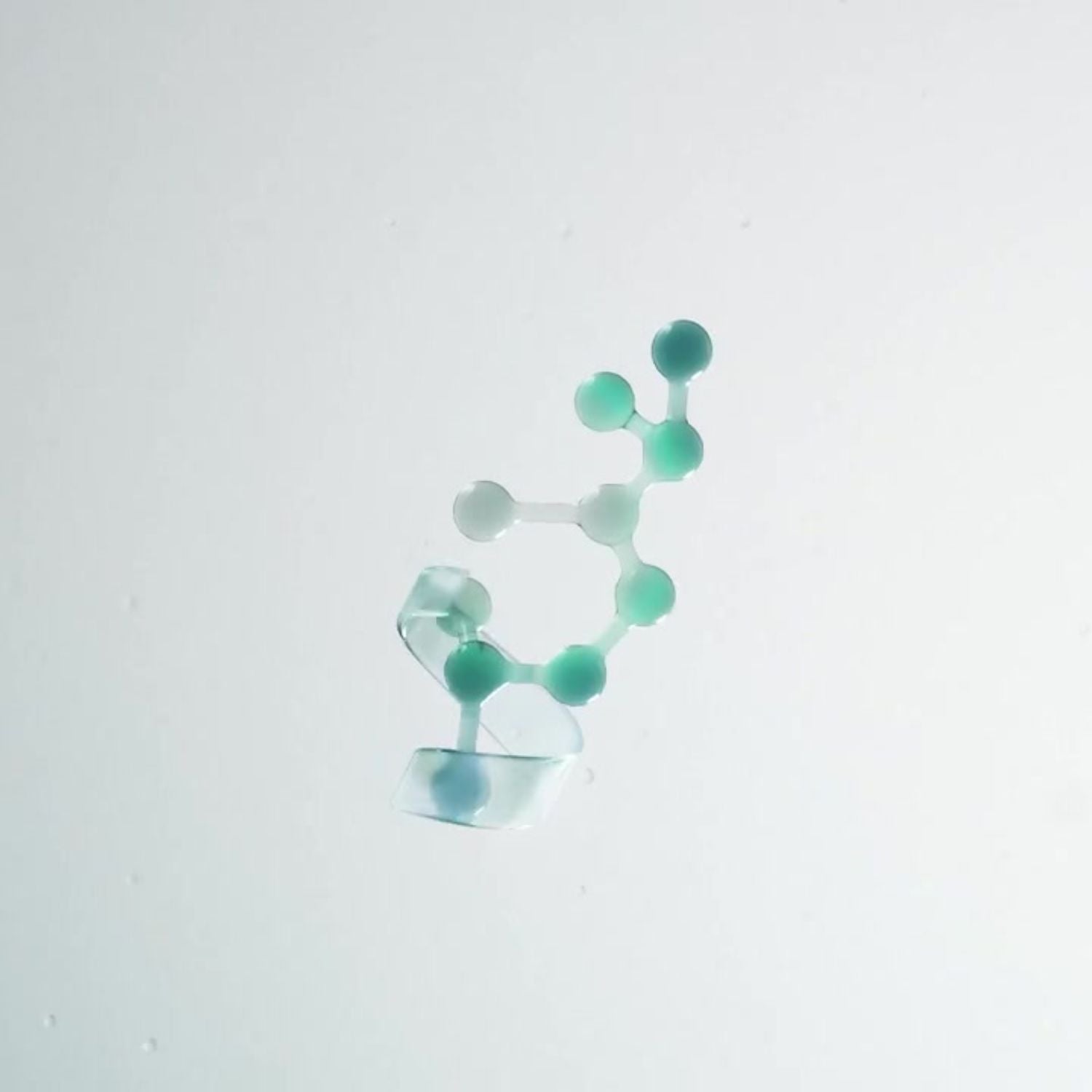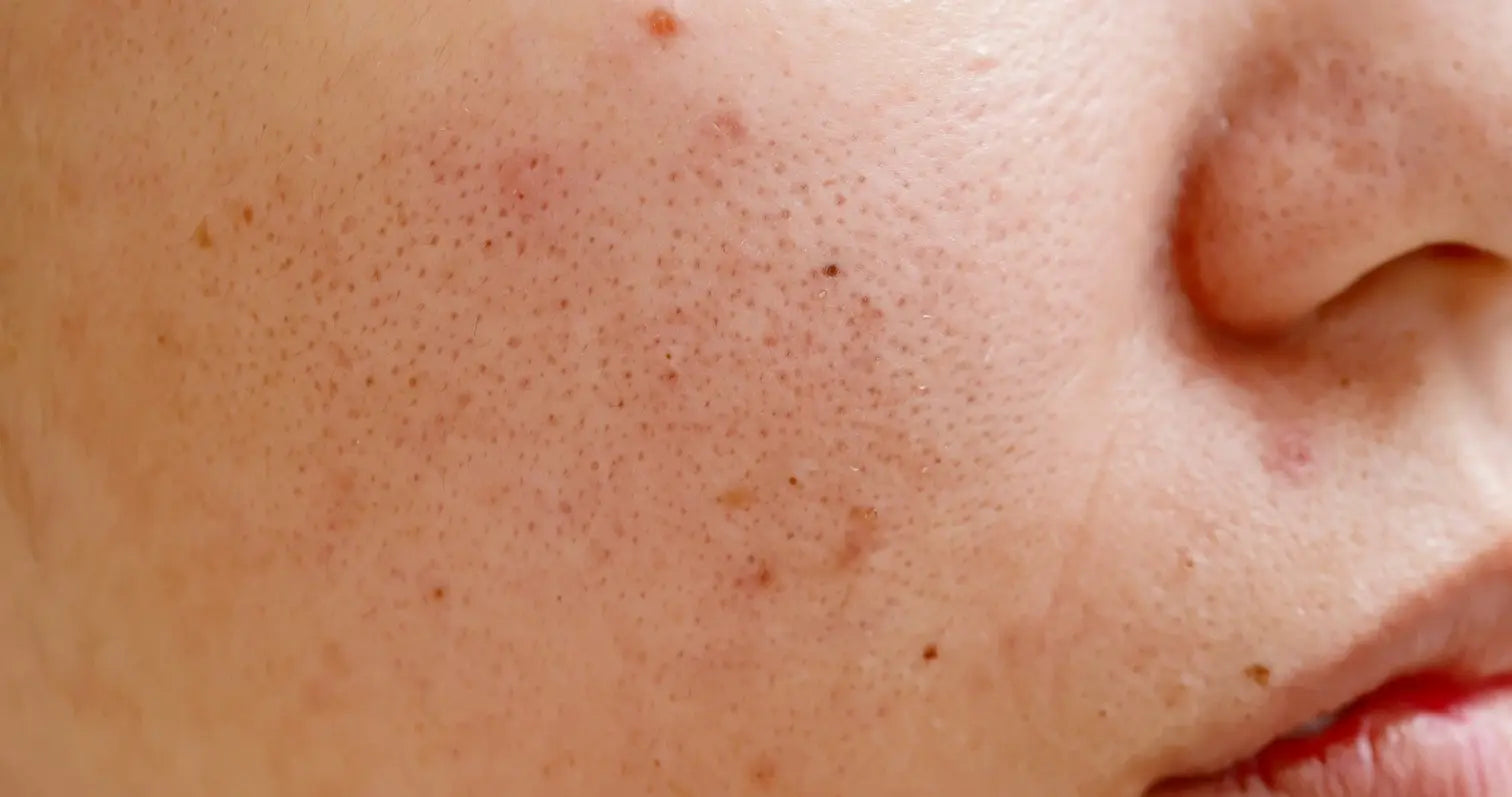What causes acne?
What causes acne?
What are the different types of acne?
- Blackheads - open bumps, visibly filled with excess oil and dead skin.
- Whiteheads - closed bumps filled with excess oil and dead skin. [4]
- Papules - small red or pink bumps with swelling and redness.
- Pustules - whitehead-looking pimples with pus, visibly surrounded by redness.
- Nodules - solid, large, and painful pimples deep in the skin.
- Cysts - pus-filled pimples that can often scar. [4]
What are the different types of acne?
- Blackheads - open bumps, visibly filled with excess oil and dead skin.
- Whiteheads - closed bumps filled with excess oil and dead skin. [4]
- Papules - small red or pink bumps with swelling and redness.
- Pustules - whitehead-looking pimples with pus, visibly surrounded by redness.
- Nodules - solid, large, and painful pimples deep in the skin.
- Cysts - pus-filled pimples that can often scar. [4]
How does acne impact long-term skin health?
How does acne impact long-term skin health?
What is acne-prone skin?
What is acne-prone skin?
How do I know if I have acne-prone skin?
How do I know if I have acne-prone skin?
What is the protocol for acne-prone skin?
- Avoid touching your face or picking at pimples. The dirt in your fingers can get trapped in your pores, leading to further breakouts. Some pimples are also infectious and can spread with touch.
- Wash your face at least twice a day with a gentle cleanser vs face wash. You may consider using a face wash at least once per day to cut through excess oil and dirt.
- Change your pillowcase often. Many pillowcases retain oil, dirt and bacteria. Sleeping on a dirty pillowcase can expose your skin to these factors for long periods of time.
- Avoid harsh scrubs. Scrubs can significantly irritate acne and acne-prone skin, worsening breakouts.
- Stay hydrated. Water encourages the flushing of toxins from your pores, keeping your skin clean from the inside! [1]
- Opt for non-comedogenic products, which are products that have been clinically validated not to clog pores. OS-01 FACE and OS-01 EYE are non-comedogenic lightweight moisturizers and potent skin longevity treatments in one. Additionally, OS-01 FACE SPF and OS-01 BODY SPF are non-comedogenic 100% mineral broadspectrum SPF30+ sunscreens for the face and body.
- Birth control
- Accutane
- Antibiotics
What is the protocol for acne-prone skin?
- Avoid touching your face or picking at pimples. The dirt in your fingers can get trapped in your pores, leading to further breakouts. Some pimples are also infectious and can spread with touch.
- Wash your face at least twice a day with a gentle cleanser vs face wash. You may consider using a face wash at least once per day to cut through excess oil and dirt.
- Change your pillowcase often. Many pillowcases retain oil, dirt and bacteria. Sleeping on a dirty pillowcase can expose your skin to these factors for long periods of time.
- Avoid harsh scrubs. Scrubs can significantly irritate acne and acne-prone skin, worsening breakouts.
- Stay hydrated. Water encourages the flushing of toxins from your pores, keeping your skin clean from the inside! [1]
- Opt for non-comedogenic products, which are products that have been clinically validated not to clog pores. OS-01 FACE and OS-01 EYE are non-comedogenic lightweight moisturizers and potent skin longevity treatments in one. Additionally, OS-01 FACE SPF and OS-01 BODY SPF are non-comedogenic 100% mineral broadspectrum SPF30+ sunscreens for the face and body.
- Birth control
- Accutane
- Antibiotics
What are the dos and don'ts for acne-prone skin?
- Fruits
- Vegetables
- Whole grains
- Beans and legumes(9)
- Vegetables and leafy greens, specifically, can also help regulate your hormones and prevent hormonal breakouts. (9)
- Sugar
- Red meat
- White bread, pasta and rice
- Dairy products such as milk and yogurt [9]
What are the dos and don'ts for acne-prone skin?
- Fruits
- Vegetables
- Whole grains
- Beans and legumes(9)
- Vegetables and leafy greens, specifically, can also help regulate your hormones and prevent hormonal breakouts. (9)
- Sugar
- Red meat
- White bread, pasta and rice
- Dairy products such as milk and yogurt [9]
What should be included in a skincare regimen for acne-prone skin types?
- Cleanser: Using a daily face cleanser during your morning and evening skincare routine can help keep dirt away from your pores. Slightly drying and less moisturizing varieties are usually a better option for oily skin to prevent the accumulation of excess oil. However, you want to make sure you don’t entirely strip the oils from your skin, as that can increase your skin’s natural oil production.
- Toner: Using a toner can help you achieve cleaner and clearer skin by removing excess oil. Try looking for toners specifically designed for acne-prone skin.
- Moisturizer: Moisturizers that are careful not to clog pores will help you keep your skin hydrated. Consider using a non-comedogenic daily peptide moisturizer that promotes overall skin health without clogging pores, like OS-01 FACE.
- Sunscreen: Sun damage can cause irritation and make acne symptoms, breakouts, or other skin conditions worse, especially if you use acne treatments that increase your skin's sensitivity to UV exposure, such as retinol and benzoyl peroxide. Consider using a non-comedogenic 100% mineral SPF 30+ sunscreen, like OS-01 FACE SPF, available in untinted and sheer tinted shades.
- Exfoliate: Once your breakouts calm down, you can try gently exfoliating to cleanse, remove your dead skin cells, and encourage new cell turnover. [1]
What should be included in a skincare regimen for acne-prone skin types?
- Cleanser: Using a daily face cleanser during your morning and evening skincare routine can help keep dirt away from your pores. Slightly drying and less moisturizing varieties are usually a better option for oily skin to prevent the accumulation of excess oil. However, you want to make sure you don’t entirely strip the oils from your skin, as that can increase your skin’s natural oil production.
- Toner: Using a toner can help you achieve cleaner and clearer skin by removing excess oil. Try looking for toners specifically designed for acne-prone skin.
- Moisturizer: Moisturizers that are careful not to clog pores will help you keep your skin hydrated. Consider using a non-comedogenic daily peptide moisturizer that promotes overall skin health without clogging pores, like OS-01 FACE.
- Sunscreen: Sun damage can cause irritation and make acne symptoms, breakouts, or other skin conditions worse, especially if you use acne treatments that increase your skin's sensitivity to UV exposure, such as retinol and benzoyl peroxide. Consider using a non-comedogenic 100% mineral SPF 30+ sunscreen, like OS-01 FACE SPF, available in untinted and sheer tinted shades.
- Exfoliate: Once your breakouts calm down, you can try gently exfoliating to cleanse, remove your dead skin cells, and encourage new cell turnover. [1]
- Hormone fluctuations, environmental conditions, and even stress can trigger the overproduction of oil in your skin. This excess oil clogs your pores, creating a pimple.
- Acne can be inflammatory, bacterial, or non-inflammatory. Acne-prone skin often experiences the bacterial form of acne.
- Genetics is a common cause of acne-prone skin. In fact, a UK study on 400 twins demonstrated that around 81% of acne resulted from genetic factors.
- If you have acne-prone skin, avoid touching your face or picking at pimples. Wash your face and your pillowcase often and opt for non-comedogenic products for areas most prone to acne. Avoid harsh scrubs and stay hydrated!
- Avoid dairy products and foods that raise blood sugar levels. These foods promote acne.
- Hormone fluctuations, environmental conditions, and even stress can trigger the overproduction of oil in your skin. This excess oil clogs your pores, creating a pimple.
- Acne can be inflammatory, bacterial, or non-inflammatory. Acne-prone skin often experiences the bacterial form of acne.
- Genetics is a common cause of acne-prone skin. In fact, a UK study on 400 twins demonstrated that around 81% of acne resulted from genetic factors.
- If you have acne-prone skin, avoid touching your face or picking at pimples. Wash your face and your pillowcase often and opt for non-comedogenic products for areas most prone to acne. Avoid harsh scrubs and stay hydrated!
- Avoid dairy products and foods that raise blood sugar levels. These foods promote acne.
- https://www.healthline.com/health/beauty-skin-care/acne-prone-skin#prevention
- https://www.medicalnewstoday.com/articles/comedonal-acne
- https://www.theskincareclinic.com.au/acne-oily-skin-congested-skin/
- https://my.clevelandclinic.org/health/diseases/12233-acne
- https://www.ncbi.nlm.nih.gov/pmc/articles/PMC3699905/
- https://skintactix.com/pages/benzoyl-peroxide-skin-damage
- https://www.laroche-posay.com.au/blog/whats-the-difference-between-acne-vs-pimples.html
- https://www.news-medical.net/health/Genetics-of-Acne.aspx
- https://www.healthline.com/health/anti-acne-diet
- https://www.singlecare.com/blog/exercise-and-acne/
- https://www.healthline.com/health/beauty-skin-care/acne-prone-skin#prevention
- https://www.medicalnewstoday.com/articles/comedonal-acne
- https://www.theskincareclinic.com.au/acne-oily-skin-congested-skin/
- https://my.clevelandclinic.org/health/diseases/12233-acne
- https://www.ncbi.nlm.nih.gov/pmc/articles/PMC3699905/
- https://skintactix.com/pages/benzoyl-peroxide-skin-damage
- https://www.laroche-posay.com.au/blog/whats-the-difference-between-acne-vs-pimples.html
- https://www.news-medical.net/health/Genetics-of-Acne.aspx
- https://www.healthline.com/health/anti-acne-diet
- https://www.singlecare.com/blog/exercise-and-acne/



